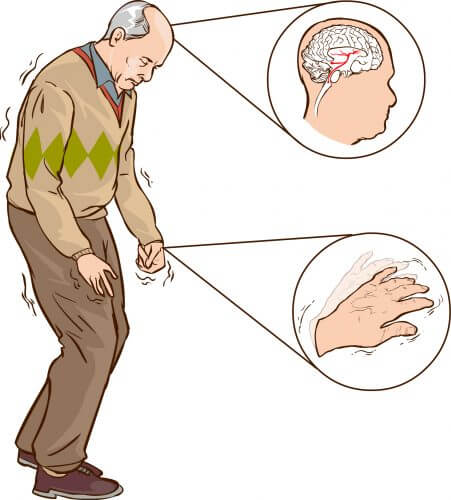The institute's scientists identified the proteins that bound to these clumps, and discovered that while young cells are able to eliminate them easily, this ability wears off over the years. It is possible that a treatment based on this principle will be effective in the future treatment of neurodegenerative brain diseases

One of the symptoms of degenerative diseases of the nervous system, such as Alzheimer's, Parkinson's or Huntington's, is the appearance of clumps of proteins that are not folded correctly in the nerve cells. Scientists at the Weizmann Institute of Science recently discovered that the best way to break down these protein clumps is to wash them out with a little "soap and water".
Dr. Maya Shuldiner, from the department of molecular genetics at the institute, explains that these lumps, called "generalized bodies", may form in any cell when the stress of everyday life causes the formation of an excessive amount of proteins that are not folded properly or are not folded at all. This situation may occur if the "cleaning team" - which consists of control proteins - stops working efficiently. This phenomenon often occurs in old age. When too many such proteins accumulate, they can interfere with the normal activity of the cell.
Dr. Schuldiner and research student Ofer Moldavsky, in collaboration with Prof. Daniel Kaganovich's research group from the Hebrew University, decided to check how cells work to eliminate the nuisance of the generalized bodies. They studied yeast cells, which, like nerve cells in humans, develop aggregated bodies when their cleaning mechanism fails. Using experimental methods developed in Dr. Shuldiner's laboratory, the scientists injected aggregated bodies of human proteins into yeast cells.
We discovered that yeast cells and young human cells are able to wash away the aggregated bodies and eliminate them, but unfortunately, this ability erodes and decreases over the years.
Among the 6,000 proteins present in one yeast cell, the scientists found 13 proteins that bound to the aggregated bodies. About half of them were known control proteins, while the rest were completely new. In another experiment, designed to check whether the newly discovered proteins participate in the cleaning and removal of the aggregated bodies, it became clear that indeed some of the newly discovered proteins were involved in the cleaning process, and that in their absence, the aggregated bodies remained in the cell, disrupting its function.
The scientists chose to focus on one of those proteins, called lml2, in order to understand its role. The first clue came from the discovery that lml2 binds to four other proteins, which come from another area of the cell where fat is stored. The connection between generalized bodies and the fat storage area was not known until now, but the way the proteins were linked hinted that there may have been a physical proximity between them. Microscopic photographs revealed that the fat pockets bind to the generalized bodies - so much so that they even move with them around the cell.
But what is the meaning of this strange pairing? It turns out that the fat pockets produce a special type of sterol-based fat (similar to cholesterol in humans), but they only do so when generalized bodies are formed. This fat is able to produce molecules that are used as a "cleaning agent", and help break down the generalized bodies. These molecules have two sides: a fatty side that repels water, and a second side that "loves" water and can bind to it. This substance allows the cells to "wash" the generalized bodies and eliminate them. At this point, the scientists performed an experiment on human cells - which yielded similar findings.
"We discovered that yeast cells and young human cells are able to wash away the aggregated bodies, and eliminate them, but unfortunately, this ability erodes and decreases over the years," says Dr. Shuldiner. "Future treatment, which will be based on the 'cleansing agents of the body', may be simpler and more effective in the treatment of diseases such as Alzheimer's and Parkinson's."
Science books
In yeast cells you can find more than 25% of the genes in which mutations cause diseases in humans.

One response
Can a certain diet provide such yeast protein?? Asking about my partner in the initial stages of Parkinson's